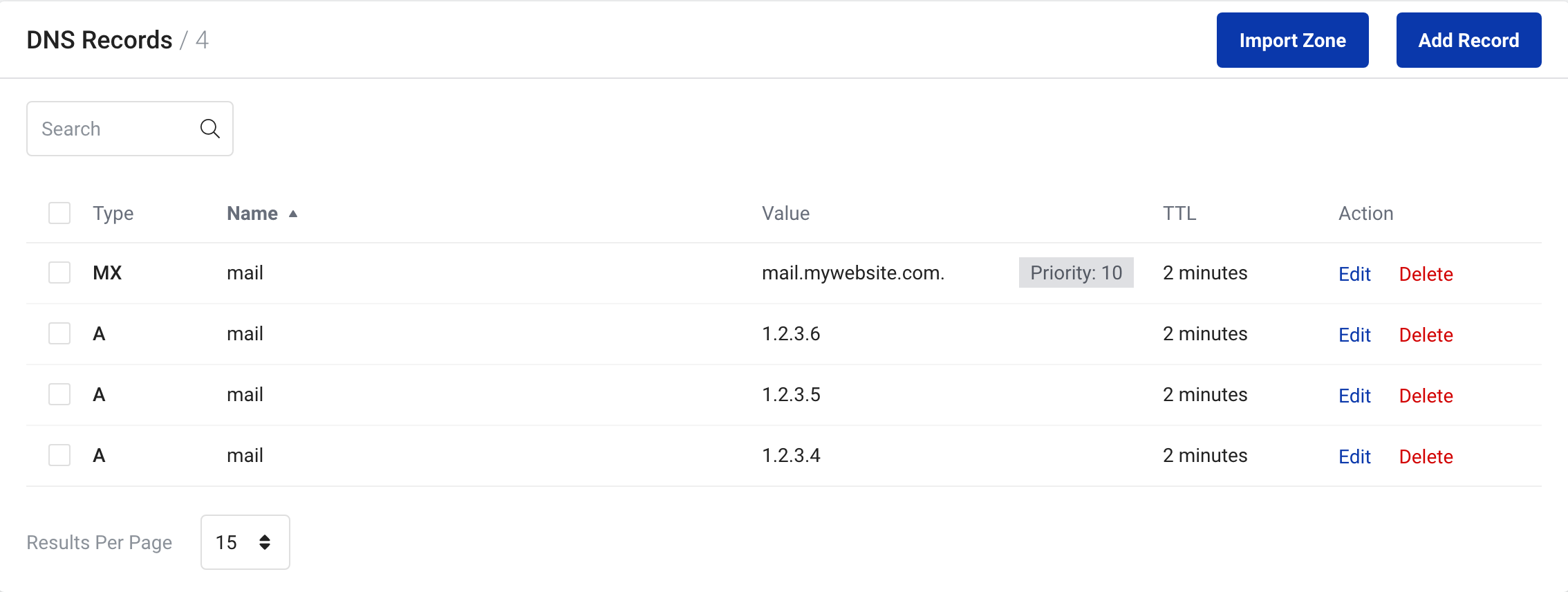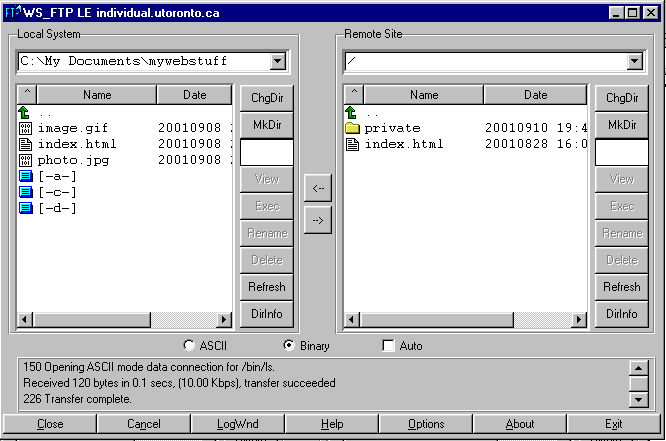
The CWD command allows you to work in a different directory. It takes a name argument, specifying a relative or absolute directory path. The 501 error will be displayed if you type the wrong directory or attempt to add parameters. The error could also be caused due to a blocked IP.
ABOR
To cancel an FTP order, issue the ABOR Command to the server. The server will then close the data connection associated with the previous command. Alternatively, if you do not specify a directory name, the server will assume that the directory is the root directory and close the data connection.
The 225 response code is sent to the ABOR command. This means that the data link is active but no file transfer is in progress. The server will then send a 226 reply code before closing the data connection, signaling that the file transfer has been completed.

APPE
The client must first establish a connection in order to upload files via FTP. Once the connection is established the client can issue APPE commands. It can then specify the file name that it wishes to upload. If the file exists already, it will add data to it. Otherwise, it'll create it.
The client has a number of options to upload a file via FTP. There are two options: the STOR command to upload a file directly from a local machine to the server and the APPE commands to create a remote file. STOU is another command that creates a unique directory and adds the data.
DELE
By typing the command "cwd" ftp DEIL, a user can delete a particular file. The command can be used for any given file on the remote host. You can also use FTP commands to accomplish different tasks. Among these are: ABOR (appe), LIST (list), and EPSV. These commands allow you to change the type and content of the server's data, which can aid in a variety of tasks.
To delete a file or directory on a remote server, use the cwd.ftp DELI command. The relative path specifies that the directory is a part of the current working directory. You may also choose to use the SMNT option. This command is useful when the user wants to mount another file system. It allows users to specify the name and location of the directory they want to access.

EPSV
FTP clients have the option to send an EPSV command to FTP servers in order to activate Extended Passive Mode. This mode allows the server's clients to communicate with it behind a firewall. The port number must be known by the client to allow it to connect to server. Clients should also specify this port when they send the EPSV command.
In this mode, you will see the responses of the FTP server, and statistics will be reported when file transfers are complete. This mode can be turned on by default. It can also be used in the event that EPSV is not supported on your server.
FAQ
What is the cost of creating an ecommerce website?
It depends on the platform you choose and whether you use a freelancer to build your site or hire a service provider. eCommerce websites start at about $1,000.
Once you've chosen a platform you can expect to pay $500-$10,000.
The average cost of a template will not exceed $5,000. This includes any customizations required to reflect your brand.
Do I need a portfolio to get hired as a web designer?
Yes. It is important to have a portfolio when applying for web design or development jobs. Portfolios should showcase examples of your skillsets and experience.
Portfolios are usually made up of examples of past projects. These could be any project that showcases your talents. You should have everything in your portfolio, including mockups.
Do I choose WordPress or a web builder?
A small website is the best way to build a successful web presence. If you have enough time and resources, build a site. Start with a basic blog, even if your budget is limited. You can always add features later as you learn how to design and develop websites.
But before you build your first website, you should set up a primary domain name. This will provide a point to which you can publish content.
Statistics
- It's estimated that in 2022, over 2.14 billion people will purchase goods and services online. (wix.com)
- The average website user will read about 20% of the text on any given page, so it's crucial to entice them with an appropriate vibe. (websitebuilderexpert.com)
- Did you know videos can boost organic search traffic to your website by 157%? (wix.com)
- In fact, according to Color Matters, a signature color can boost brand recognition by 80%. There's a lot of psychology behind people's perception of color, so it's important to understand how it's used with your industry. (websitebuilderexpert.com)
- It's estimated that chatbots could reduce this by 30%. Gone are the days when chatbots were mere gimmicks – now, they're becoming ever more essential to customer-facing services. (websitebuilderexpert.com)
External Links
How To
How can I become a UI designer?
There are two ways to become a UI designer:
-
You can also go to school and get a degree as UI Design.
-
It is possible to start a freelance career.
You will need to complete four years of college or university study if you plan to continue your education. This includes computer science, psychology, business, and art.
Classes can be taken at either state or community universities. Some schools offer no tuition, while some charge tuition.
You will need to find work after graduation. If you are going to be working for yourself, you will need to build your client list. It is essential to establish a professional network so other professionals know you exist.
Opportunities to intern in web development companies are available. Many companies hire interns in order to gain valuable experience before they hire full-time employees.
You will find more jobs if you have a portfolio that showcases your work. Your portfolio should include work samples as well as details of the projects that you have worked on.
It's a smart idea for you to send your portfolio by email to potential employers.
Freelancers need to promote themselves. You can also advertise your services via job boards like Guru, Indeed, Guru, Upwork, and Freelance.
Freelancers often receive assignments from recruiters who post openings online. These recruiters find qualified candidates for specific jobs.
These recruiters provide candidates with a project description that details the position's requirements.
A freelancer is not required to sign a long-term contract. It is best to negotiate an upfront fee if you intend to move forward.
Many designers prefer to work directly and not through agencies. Although this may seem appealing, many people lack necessary skills.
Agency workers are often well-versed in the industry they work in. They have access the right training and resources to ensure they produce high-quality results.
Aside from these benefits, agency workers are often paid a higher hourly pay.
The downside to working with an agency is that you won't have direct contact with the employer.
A UI designer must be self-motivated, creative and flexible.
Also, you must have excellent communication skills both verbally and in writing.
UI designers create user interfaces and visual elements for websites.
They are also responsible in ensuring that the site meets all users' requirements.
This involves understanding what information visitors need and how the site should function.
Wireframes are created by UI designers using a variety of tools. They use wireframing to help them visualize the layout of a webpage before they start designing.
Wireframe templates are available online, making it easy for anyone to create their own wireframes.
Some designers are solely focused on UI design while others blend UI design and graphic design.
Photoshop is a popular software used by graphic designers for editing images.
To create pages and layouts, they then use Adobe InDesign.
Photographers capture images using digital cameras or DSLRs.
The photos are then uploaded into a photo editing program. Here they can add captions, filters, or other effects.
After taking the photo, the photographer saves it in a file format that is compatible with the website.
It is crucial to consider all aspects when designing a website.
This includes research, planning and prototyping.
Research – It is essential to do extensive research before you begin a new project.
Planning – Once you've done your research, you will want to start developing a plan.
Wireframing – A wireframe is a preliminary sketch or drawing of a webpage or application.
Prototyping -- Prototypes allow you to make sure that your final product is exactly what you imagined.
Testing - It is important to test the prototype several times in order to make sure it works.
Coding - Coding refers to the process of writing computer code.
Content Creation: Content creation can include everything from copywriting to managing social media profiles.
Publishing entails uploading files to a server and ensuring the site is accessible.
As a freelance UX/UI designer, you will need to learn about different projects.
One example is that some companies only need wire frames, while others need complete prototypes.
Depending on which type of project you accept you might be asked to do specific tasks.
If you are hired to create wireframes for a company, you may be expected to produce several wireframes each time.
If you're being hired to create a full prototype, you might be asked to create a fully functional site.
Regardless of the type of project, it's important to have strong interpersonal skills.
You need to build strong relationships with potential employers as freelancers are hired primarily through referrals.
In addition, you must be able to communicate effectively both verbally and in writing.
A portfolio is an important tool in any freelancer's arsenal.
It showcases your work and demonstrates your ability to deliver high-quality results.
Online portfolios can help you do this.
Find websites similar in your niche to get started.
Then, search these sites to see how each one presents its services.
Once you have identified the best practices you believe are most effective, you can start to implement them.
It's also useful to include links from your portfolio in your resume.